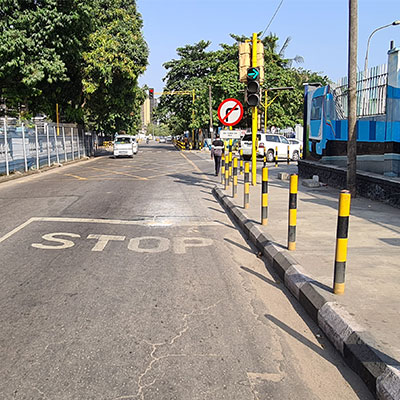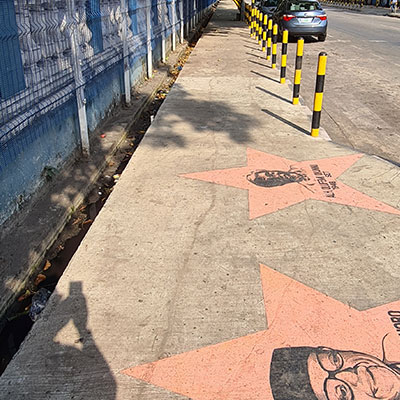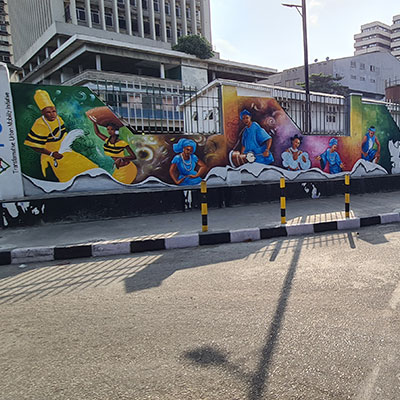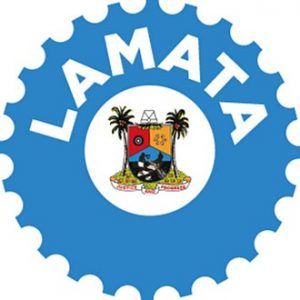







NON-MOTORIZED TRANSPORT
Non-Motorized Transport (NMT), mainly consists of two modes: walking and cycling.The role of NMT in urban transportation systems can be described as follows:
- As the main transport mode used by low-income earners, who cannot afford a private motorized vehicle.
- As the transport mode used in the shortest stages of daily trips, namely those covering distances between places of residence and public transportation stops. This also includes distances between public transportation stops and the final trip destination, as well as for connecting different transportation modes. It must be noted that access to public transport can involve significant walking distances.
- Finally, as a transportation mode on its own, regardless of the travellers’ income level; an alternative to private transportation in the framework of a sustainable, eco-friendly urban transportation system.
NMT has been usually ignored by policymakers when defining transport plans, preferring fossil fuel based technologically driven motorized transport. This preference has orientated policies and actions leading to an unsafe and less attractive NMT.
Urban areas in African cities (and Lagos in particular), can improve working and living conditions through the NMT plans, not only because it represents an environmentally friendly and socially inclusive mode of transportation, but also because it represents a fundamental part of the urban transportation chain, particularly for access to public transportation modes and for modal interchange.
NMT is a key-element to the establishment of a sustainable transportation system, economically and environmentally, thereby facilitating the development of a multi-modal transportation system with adequate access to public transportation services. It also provides an effective connectivity between the different transportation modes and minimizes the environmental impact caused by motorized transportation.
Going forward, mobility planning should focus on people, not vehicles. Urgent steps are needed and are being taken to ensure more equitable allocation of road space by incorporating a focus on walking, cycling and public transport in the planning, design, managing and budgeting stages of transport projects. Towards this end, the Lagos Metropolitan Area Transport Authority (LAMATA) on behalf of the Lagos State Government (LSG) has initiated the process of creating a Non-Motorized Transport Policy to guide the implementation of transport systems that prioritise the needs of pedestrians and cyclists.
The objectives of the NMT policy are as follows:
- Enable equitable access for all: by improving access and mobility for all residents; promoting social and economic empowerment through the provision of improved low-cost mobility; facilitating safe access for children; enabling gender equity through the provision of non-motorized transport(NMT) and public transport facilities that are safe for women to use; enabling the inclusion of persons with disabilities by creating NMT facilities that follows principles of universal standard; and by creating a changed culture that accepts the use of walking, cycling and public transport as acceptable and aspirational means to move around the city.
- Optimise the use of resources such as space, funds, time and energy: by investing in NMT and public transport modes that consume fewer resources per person-trip compared to personal motor vehicles (PMV) and by encouraging dense, compact and mixed-use developments that contribute to shorter trips and allow more people to live and work close to PT facilities.
- Improve road safety and personal security: by improving the management of traffic conflicts; reducing road crashes and deaths, and creating public spaces that are safe at all times of the day for all users.
- Reduce local and global environmental impacts Lagos’s transport system: by expanding the zero-pollution NMT modes and low-pollution motorized modes, helping to improve the city’s air quality.
- Enable community participation: by involving local residents, businesses and other stakeholders in the preparation of designs to foster the community’s active use and sense of ownership of these spaces.
WHY ADOPT NMT PLAN FOR LAGOS?
A NMT plan for Lagos has a notable value not only in the framework of current Strategic Transport Master Plan (STMP) Extension Project, but also a reference for other African cities as well as all mega cities in emerging economies.
Non-Motorized Transport, especially walking, is the most common form of mobility in Lagos, particularly for low-income households. According to the analysis of the fieldwork campaign undertaken for the current STMP Extension project, around 30% of Lagos’ mobility is on foot or by bicycle.
The interaction between pedestrian and motorized vehicles in Lagos is unplanned and dangerous. Indeed, there is no recognition for non-motorized means of transportation as there are a few segregated traffic facilities for pedestrians (such as walk ways, zebra crossings, footbridges, underpasses and signs) and no pathways for bicycle riders. As a result, pedestrians are frequently forced to walk on the carriageway sharing the same roadway with motorized transport, which implies a low level of road safety. This problem is worsened by the current problem of the road capacity and an absence of road hierarchy in most of the major areas of the city.
Furthermore, the use of junctions as non-regulated commercial areas (and un-regulated street trading in general) has been identified as one of the critical issues of Lagos urban mobility. The invasion of the little roadway available for pedestrians by this kind of activity presents a general problem in all of Lagos urban core. This problem becomes particularly apparent in areas such as Lagos Island, traditionally regarded as the commercial and financial hub of Lagos. Currently, Lagos Island is at a stage of urban decline with pedestrians bearing the brunt.
The lack of space for pedestrians is also a problem in Lagos public transportation network: There is no real provision for proper accessibility to bus stops/terminals, and an increasing number of traffic accidents involving pedestrians are being registered in relation to unsafe bus stops.


